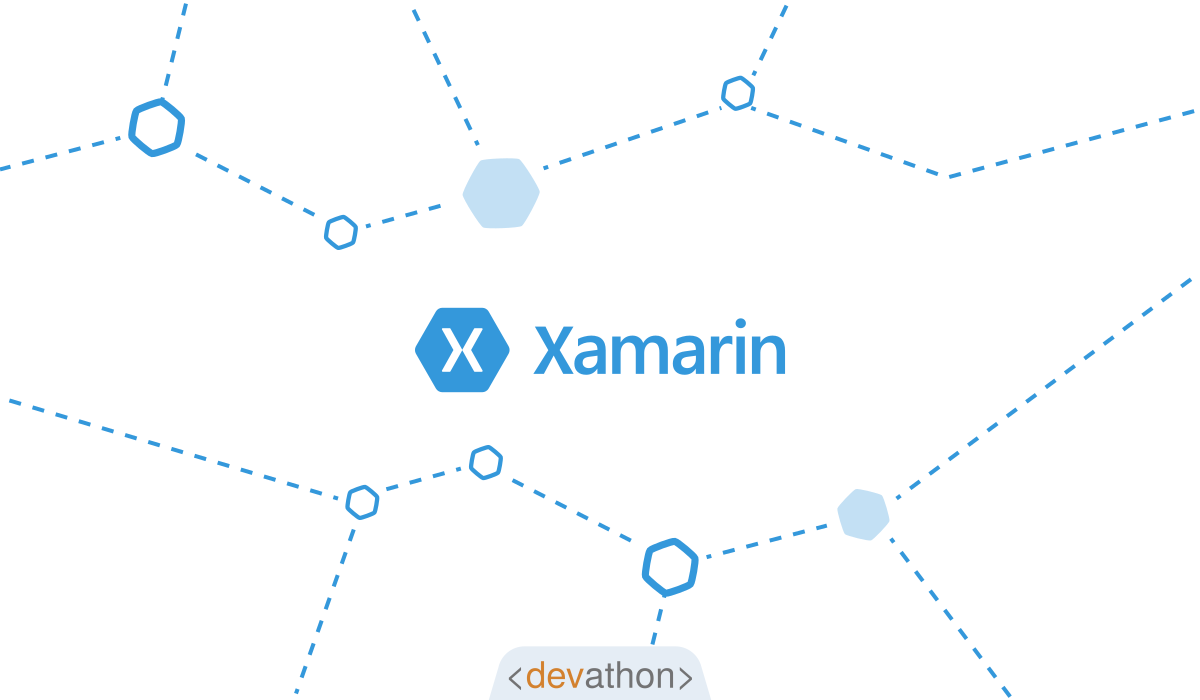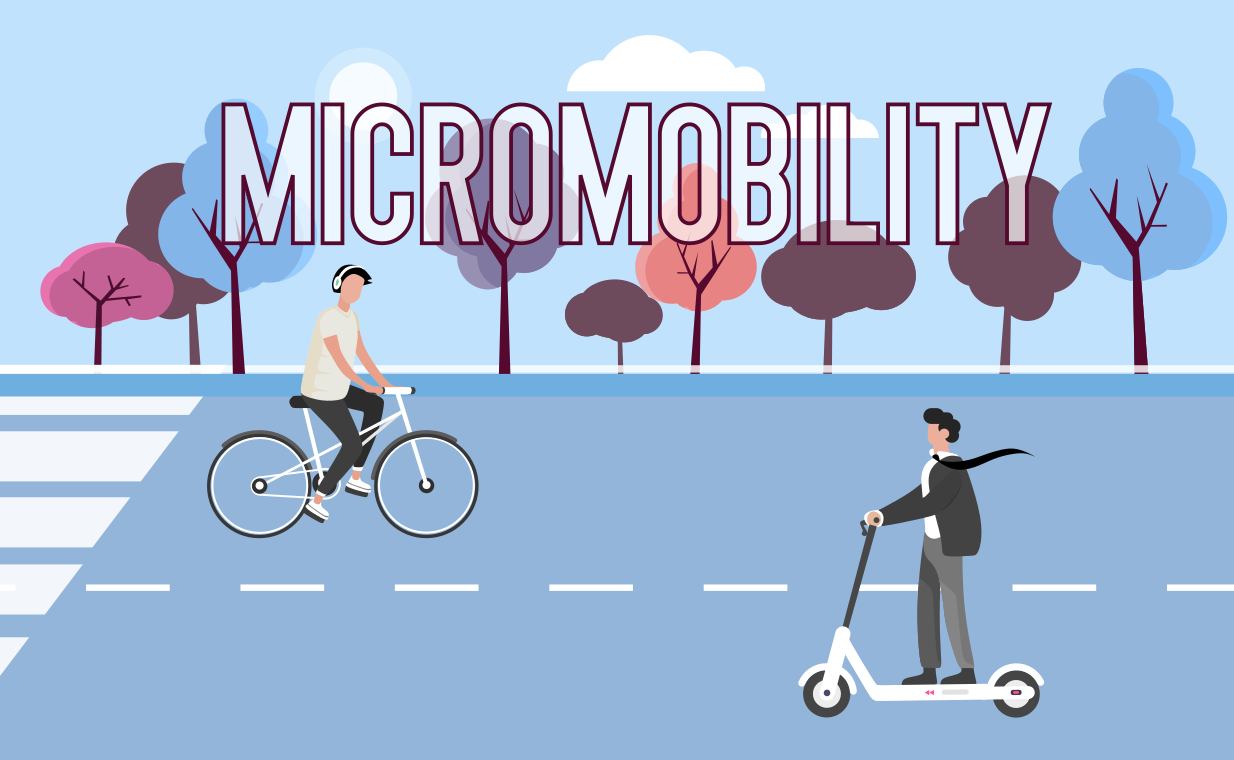Flutter vs Xamarin: A comparison
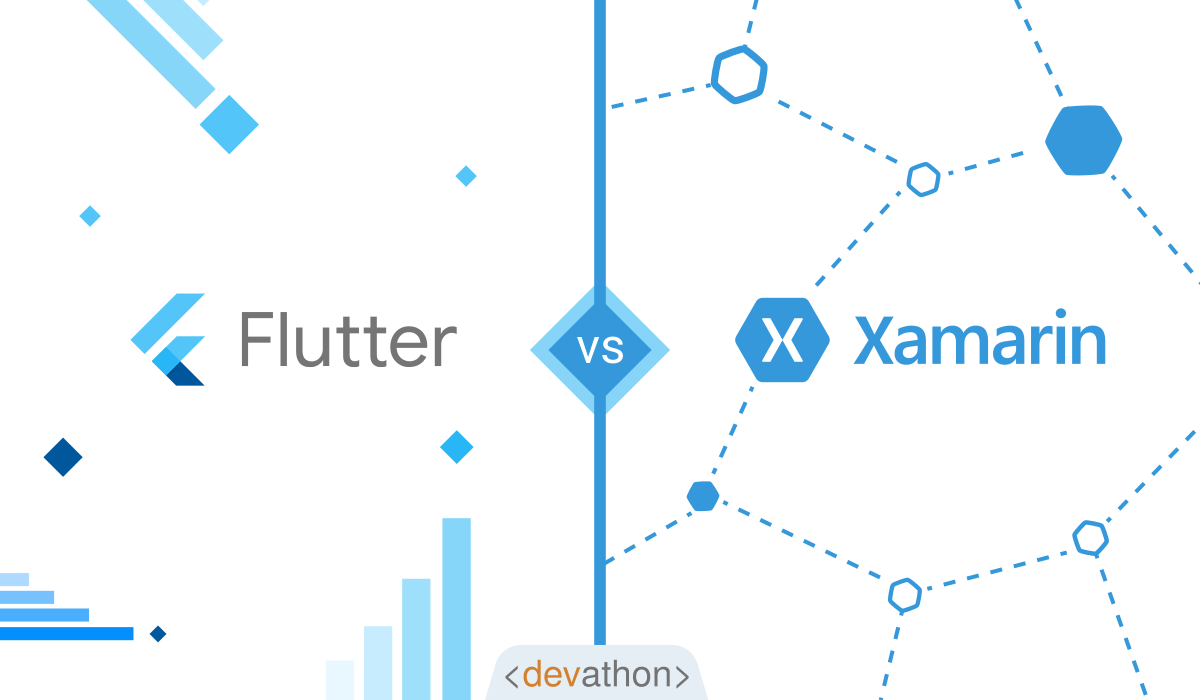
Are you an entrepreneur or an IT leader in an enterprise undertaking a mobile app development project? Why does the Flutter vs Xamarin comparison matter for you?
You are likely weighing between various development approaches and technologies. You can take the native development route. This offers the best user experience, performance, and app security. You need to develop entirely separate applications for Android and iOS though, which involve entirely different skills. Two teams, two codebases, and more maintenance efforts make this an expensive option.
The other option is cross-platform development, where you use one technology solution to develop both Android and iOS apps. You expedite development. Furthermore, you reduce development and maintenance costs.
Let’s assume that you opted for cross-platform mobile development. You are evaluating frameworks and SDKs. Flutter and Xamarin are two prominent options, and you are wondering which one to choose.
In this guide, we compare Flutter vs Xamarin. We provide brief introductions to both. Subsequently, we discuss their pros and cons. A comparison follows. Finally, we suggest when to use Xamarin vs Flutter.
Flutter: An introduction

You can use Flutter, an open-source mobile SDK to create cross-platform mobile apps. It helps you to create mobile apps that look like native apps. You can use one codebase for developing an Android as well as an iOS app.
A brief history of Flutter
Google introduced Flutter in 2015. The company had initially named it “Sky”, and it ran on Android. Google formally launched Flutter 1.0 in December 2018.
Flutter witnessed multiple iterations of development subsequently. At the time of writing this, the last stable release came in October 2020.
Key features of Flutter
Flutter has the following key features:
- Platforms supported: While you will likely use Flutter for developing mobile apps for Android and iOS, it supports more platforms. You can use it to develop apps for Windows, Linux, Mac, and Google Fuchsia.
- The Flutter SDK: Flutter offers a collection of tools to help developers. Your developers can expedite the project using this SDK. The SDK also includes tools to compile the code into native machine code for platforms like Android and iOS.
- The Flutter Framework: Flutter offers a UI library that comprises widgets. This contains reusable UI elements, and developers can personalize it. A few examples are buttons, text elements, sliders, etc.
Where is Flutter used and which companies use it?
Businesses are using Flutter to use cross-platform mobile apps that work on both Android and iOS. The following are a few examples of companies using Flutter:
- Realtor.com
- Tencent
- The New York Times
- Groupon
- Alibaba Group
- Square
- Dream 11
- BMW
- eBay
The pros and cons of Flutter
Why should you explore Flutter for mobile app development? What does it offer, and what are the limitations? We now evaluate this.
The advantages of Flutter
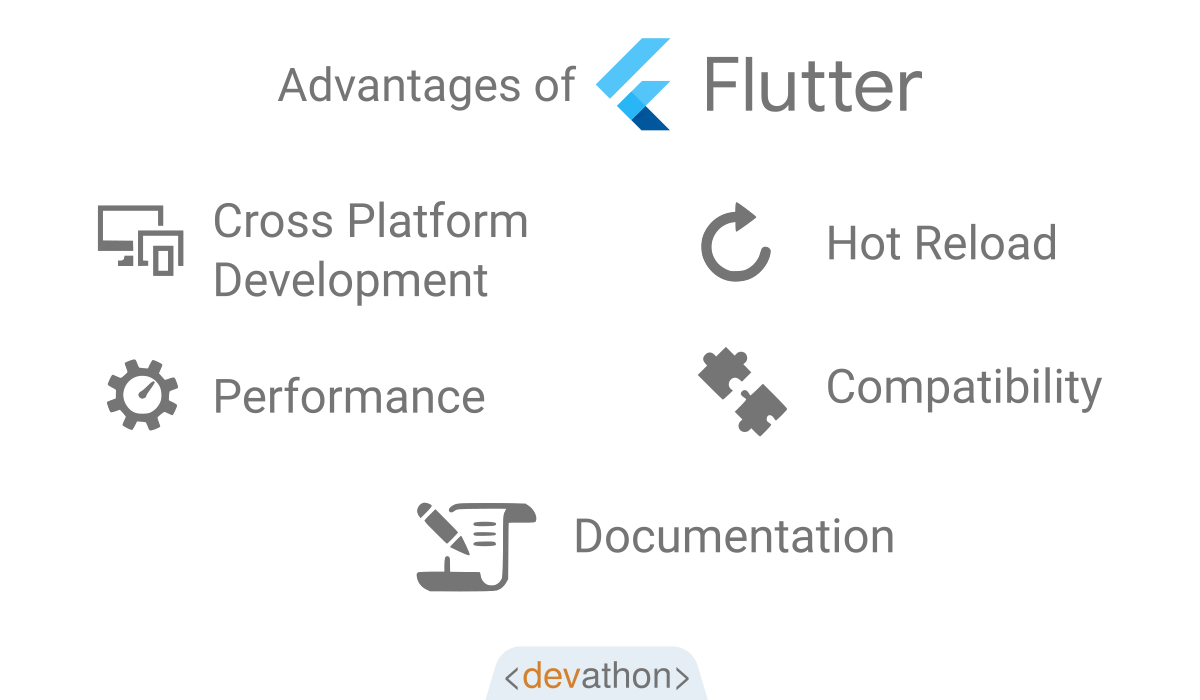
Flutter offers the following advantages:
- Cross-platform development: Like cross-platform development frameworks, Flutter allows you to develop a mobile app that works on both Android and iOS. You launch an app covering both of these popular mobile operating systems with one codebase only. With one development team, you save time. You save development and maintenance costs too.
- Performance: Flutter offers robust performance. This SDK uses Dart, which is a performant programming language. Dart compiles into native platform code for Android and iOS. The widgets of Flutter reduce the need for communication between the mobile app and the mobile platform. The combined effect of these two factors results in a fast app startup time.
- Hot reload: Your team can make code changes and view the impact immediately on emulators, simulators, and hardware. Flutter reloads the changed code within a second. Your development team doesn’t need to restart the app. These save time and offer convenience to developers.
- Compatibility: Flutters offers a key advantage via its widgets. These reduce compatibility issues since they support different mobile OS versions. Programmers don’t need to resolve compatibility issues when running the app on older OS versions. Mobile apps developed on Flutter will work on future versions of a mobile OS, furthermore, the Flutter team keeps the widgets up-to-date.
- Documentation: Flutter offers good documentation.
The disadvantages of Flutter
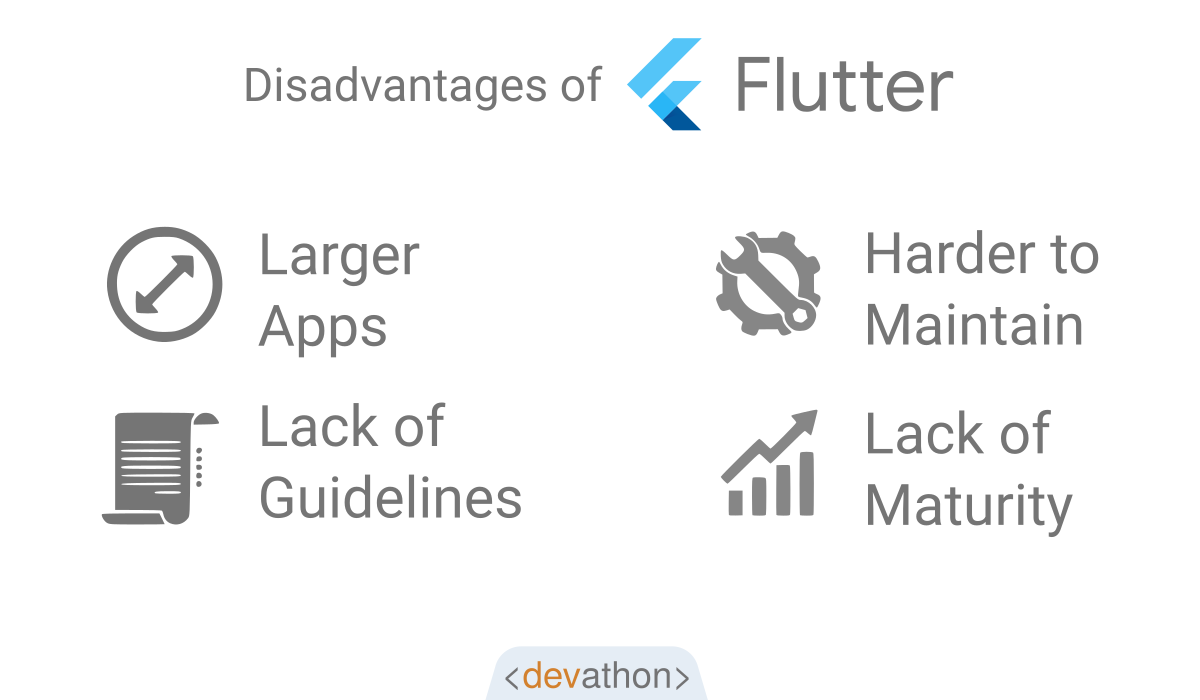
Flutter has the following disadvantages:
- The user experience can’t match that of native apps: Flutter helps you to develop near-native apps. The user experience and look-and-feel of Flutter apps can’t fully match the native apps though.
- The lack of maturity: Flutter is relatively new, and it’s still seeing plenty of development. The framework doesn’t have the stability that established open-source frameworks have. Some libraries are still in the early stage of development, and Flutter lacks some of the advanced features that utilize the power of native mobile operating systems.
- The underlying language lacks maturity: Flutter uses Dart. While this programming language promises much, it lacks the maturity of native platform-specific development languages. Dart isn’t as mature as Swift or Kotlin. It doesn’t offer as many powerful features as Swift or Kotlin.
- Large apps: Flutter apps tend to be large. Downloading and updating them can take more time than native apps.
- The lack of guidelines: Since Flutter is new, developers don’t have access to robust guidelines. This can pose challenges if you are planning to develop complex apps.
- Maintenance: Both Flutter and Dart are undergoing frequent changes. This could make it hard to maintain the codebase.
A brief introduction to Xamarin
Xamarin is another open-source framework for cross-platform development. You can create an app with one C# codebase and run it on Android and iOS.
A brief history of Xamarin
Xamarin was a San Francisco-based company, and it was founded in 2011. The company had created Mono, Xamarin.Android, and Xamarin.iOS. These are cross-platform implementations of Microsoft .NET.
Microsoft acquired Xamarin in 2016. The technology giant has integrated Xamarin into the .NET platform. The framework now belongs to the C#/.NET/Visual Studio group of software products.
Key features of Xamarin
With the integration of Xamarin into the .NET platform by Microsoft, Xamarin now extends the capabilities of .NET. It does that by providing the following:
- A base framework to access native platform features;
- XAML (Extensible Markup Language) to create dynamic mobile apps using C#;
- Libraries for common architectural patterns like Model-View-View-Model (MVVM);
- Editor extensions that highlight syntax, help to complete coding, etc.
Where is Xamarin used and which companies use it?
You can use Xamarin to develop cross-platform apps for Android, iOS, and Windows. The following are examples of companies/organizations that use Xamarin:
- Fox Sports
- Olo
- Siemens
- BBVA
- The World Bank
- Alaska Airlines
- UPS
- American Cancer Society
- JustGiving
The pros and cons of Xamarin
We now summarize the pros and cons of Xamarin.
The advantages of Xamarin
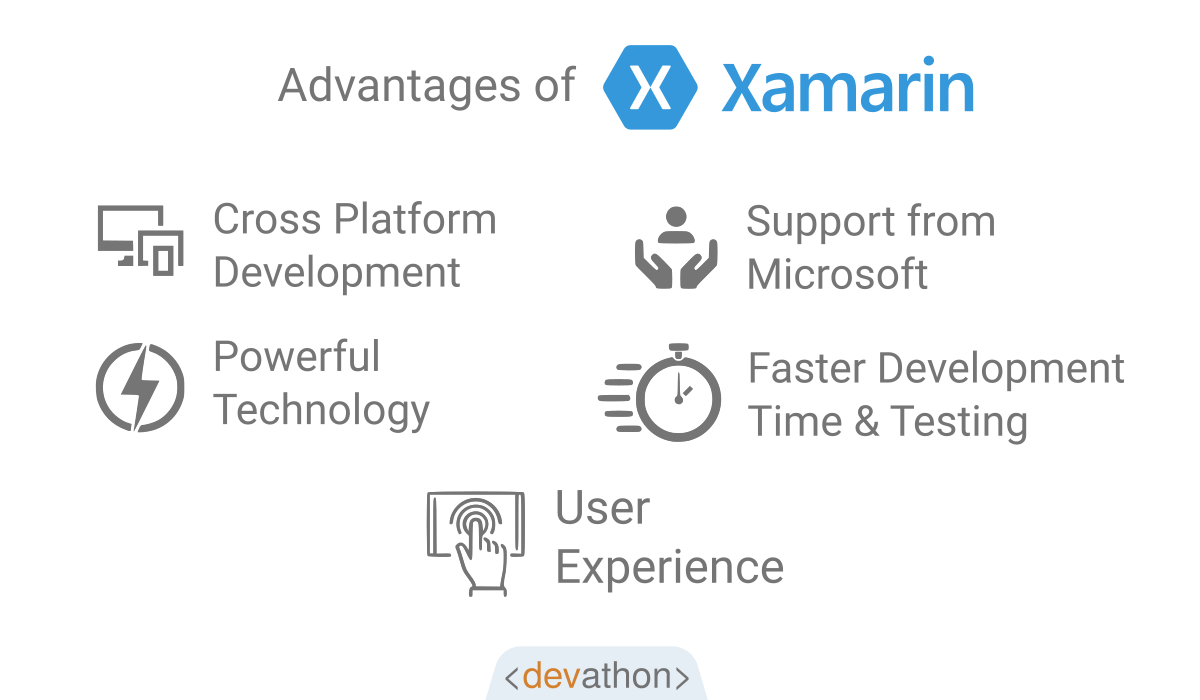
Xamarin offers the following advantages:
- Cross-platform development: As with other cross-platform development frameworks, you can run one app on both Android and iOS. This results in faster development. Maintaining one code base is less expensive than maintaining native apps.
- Support from Microsoft: You will receive robust developer support for Xamarin. Microsoft typically offers very good documentation, and that’s applicable to Xamarin too. This helps developers to learn it. Your development team can take the advantage of products like the Xamarin Test Cloud. Microsoft ensures that Xamarin remains up-to-date, and this helps with maintenance.
- Powerful technology: Xamarin uses C# and .NET. These are powerful technologies that offer plenty of flexibility. Many developers already know C# and .NET, which is another advantage.
- Faster development and testing: Xamarin offers code sharing capabilities. You can use the Test Cloud services, which helps you to run tests on 2,000 devices. These factors combine to expedite development and testing.
- Performance: Xamarin offers high performance, thanks to native API access. The native compilation, hardware acceleration, and other factors optimize the performance of the app.
- User experience: Xamarin.Forms help your team to deliver a high-quality user experience. It has a cross-platform GUI library. You can use it for Android, iOS, and other popular Apple platforms. Xamarin.Forms help you to build UIs that comply with platform-specific guidelines. It helps with code-sharing and faster prototyping, which is another advantage.
The disadvantages of Xamarin
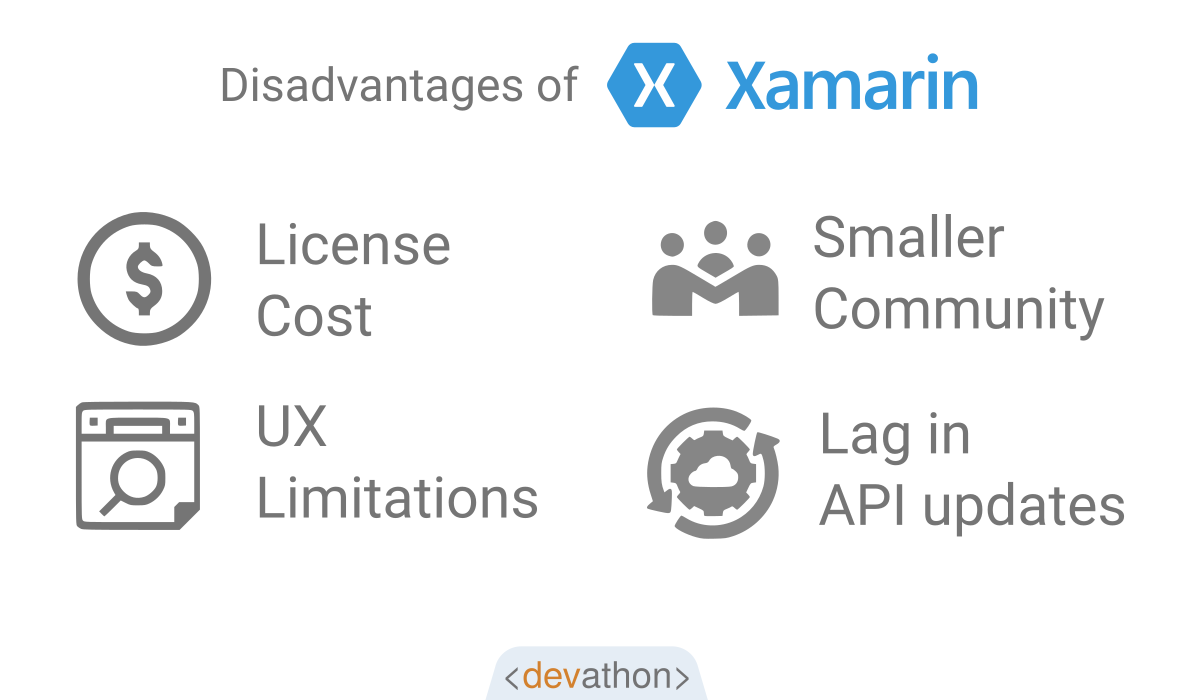
If you use Xamarin, then you need to contend with the following disadvantages:
- License cost: Xamarin is an open-source framework, and it’s free. However, commercial development is a different ball-game. Large-scale commercial software development requires you to use the Microsoft Visual Studio IDE. That’s expensive.
- User experience: Xamarin delivers a near-native experience. It can’t match the native UX fully though. There are limitations to both Android and iOS development with Xamarin. For example, it supports limited generics for iOS. For Android, the dynamic language support is limited.
- Smaller community: While Xamarin has a developers’ community, it can’t match the developer communities for native Android or iOS development.
- “Lock-in”: You can use code written in Xamarin within the .NET development stack only. You can’t reuse this code on any other technology stack.
- Overhead: Xamarin apps are large. This causes overhead.
- A lag in API updates: When new releases of Android or iOS SDKs come, the Xamarin framework needs updates. The API updates take time. Developers will experience a lag.
A comparison between Flutter vs Xamarin
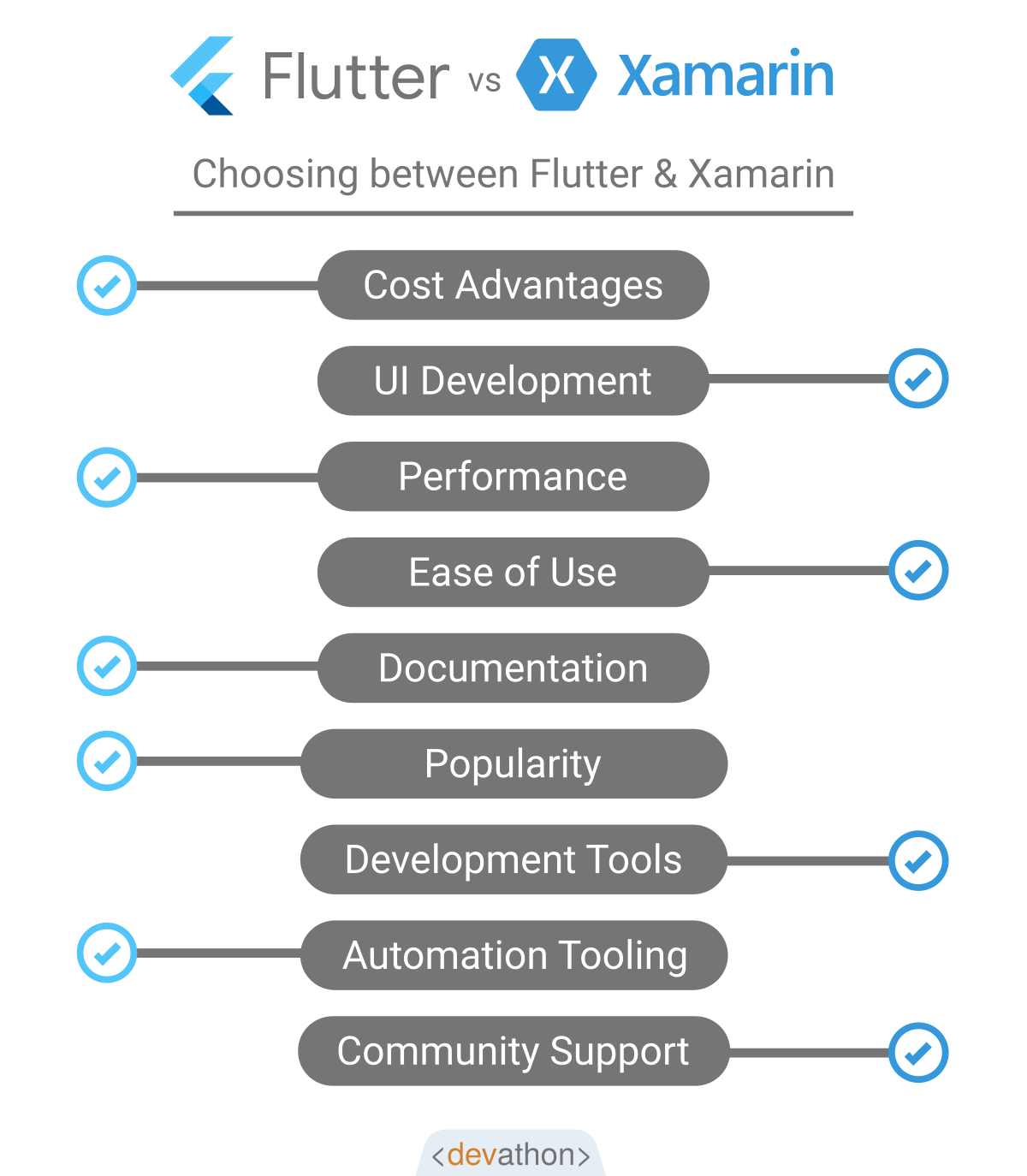
How does the Flutter vs Xamarin comparison play out? Let’s evaluate that.
Cost of Flutter vs Xamarin
Both Flutter and Xamarin are open-source frameworks. However, commercial-scale software development with Xamarin requires Microsoft Visual Studio IDE. The license costs for it is high. Flutter provides better cost advantages than Xamarin.
The user experience provided by Xamarin vs Flutter
UI development tools influence the user experience. Xamarin is a more mature framework than Flutter. It has a more comprehensive set of UI development APIs, and it offers better documentation for this. You will find Xamarin easier for UI development.
Performance differences between Flutter vs Xamarin
Whether you develop an app using Flutter or Xamarin, the app will be large. That impacts the performance of the app. Xamarin binaries are smaller than Flutter binaries. However, the Dart engine of Flutter ultimately delivers better performance than Flutter. Flutter remains ahead as far as performance is concerned.
Flutter vs Xamarin: The ease of use
Both Xamarin and Flutter offer productivity gains to developers. However, Xamarin provides better developer tools and documentation than Flutter. Xamarin is easier to use on the part of developers.
Xamarin vs Flutter: The availability of development tools
Xamarin has been around for longer than Flutter. It uses mature development tools like Microsoft Visual Studio IDE, and Flutter can’t match it as yet. Xamarin offers better development tools.
Flutter vs Xamarin: Testing, DevOps, and CI/CD support
While both Xamarin and Flutter support testing, Flutter is ahead. It provides better testing support. Its widget testing support will help your team. The team can test at multiple levels too. Flutter also provides better build and deployment automation tooling support than Xamarin.
Flutter vs Xamarin: Learning curve and documentation
Both Flutter and Xamarin provide useful guides. However, you need proprietary software for Xamarin. There’s also the factor of technology lock-in in the case of Xamarin. As a result, developers need to learn C# and .NET. The learning curve is less in the case of Flutter. Flutter doesn’t require any other proprietary software, therefore, it’s ahead in this aspect.
The popularity of Xamarin vs Flutter
Flutter enjoys more popularity than Xamarin. The Stack Overflow Developer Survey 2020 shows that Flutter is the 9th most popular framework, and Xamarin is ranked 13th. This survey also shows that Flutter is the 3rd most loved framework. Xamarin lags in this aspect. It’s the 16th most loved framework. You will likely find Flutter developers easier than Xamarin.
Community support for Flutter vs Xamarin
The developer communities for both Xamarin and Flutter are growing. However, Xamarin has a bigger developer community than Flutter at the time of writing this. You will get better community support in the case of Xamarin.
Where to use Flutter vs Xamarin?
When should you use Xamarin vs Flutter? The decision depends on the following factors:
- Project complexity: Complex projects require you to focus more on development and testing. Excellent tooling support for testing and CI/CD helps in such projects. Use Flutter for complex projects.
- The speed of development required: Xamarin provides better development tools than Flutter, and it’s easier to use. If you need fast development, use Xamarin.
- Availability of developers: You will find Flutter developers easier than Xamarin since it’s more popular. Flutter is also more loved than Xamarin. This means that finding Flutter developers will be easier in the future. If finding developers is a crucial factor for you, then choose Flutter.
- Cost: Commercial-scale development using Xamarin is more expensive than using Flutter. This is due to the license cost of Microsoft Visual Studio IDE. If tooling cost is high on your priority, then choose Flutter.
- Learning curve requirements: Xamarin requires a steeper learning curve than Flutter.
- Maintenance requirements: Xamarin is more mature than Flutter. It also receives strong support from Microsoft, therefore, plenty of development on Xamarin is in progress. You will find the long-term maintenance easier with Xamarin.
Conclusion
Both Flutter and Xamarin present robust solutions for cross-platform mobile development. Xamarin and Flutter have many advantages, and they have a few limitations too. Consider your project requirements carefully before choosing a development framework.
Are you looking to get your App built? Contact us at hello@devathon.com or visit our website Devathon to find out how we can breathe life into your vision with beautiful designs, quality development, and continuous testing.


